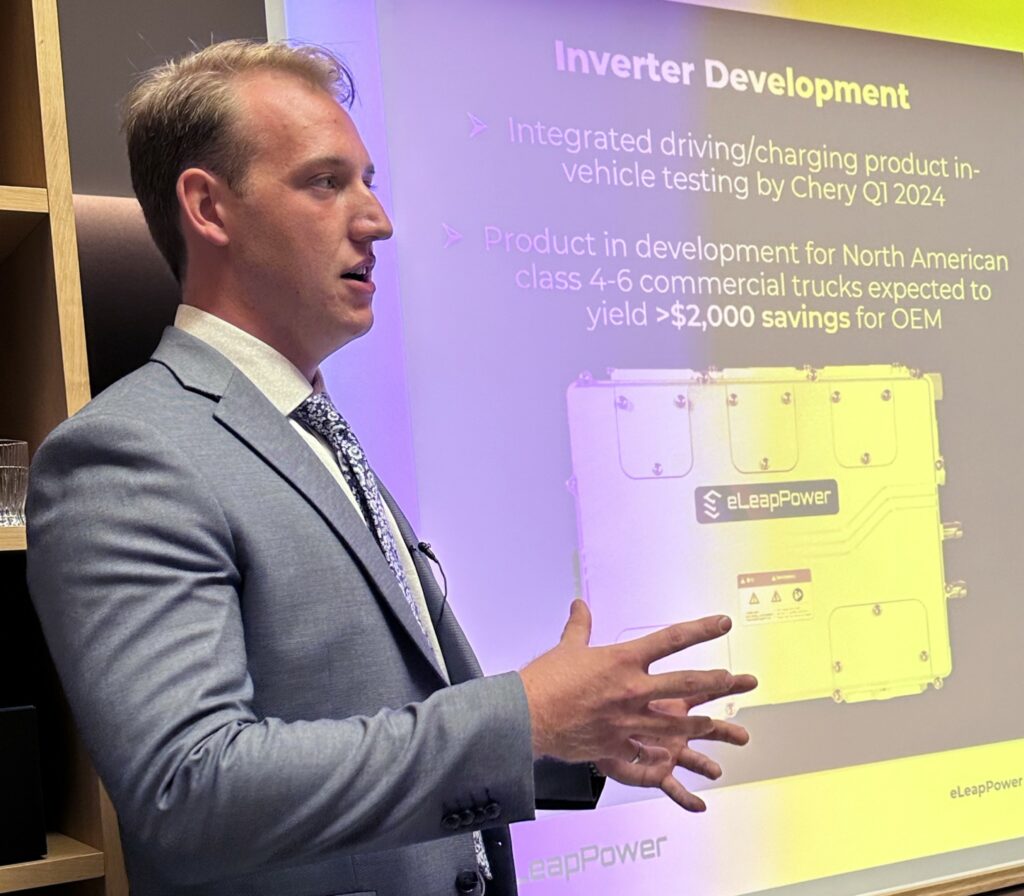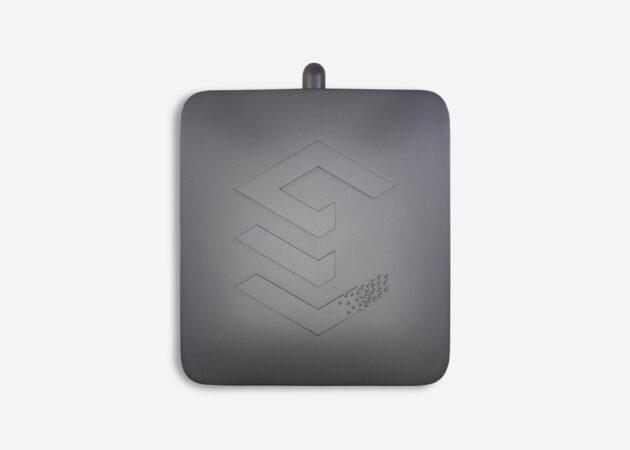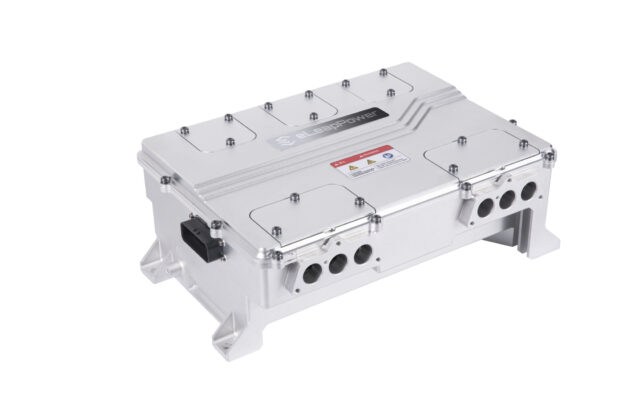eLeapPower integrates EV charging components to reduce costs for OEMs, fleets
A Toronto company is helping electric truck OEMs reduce the cost and complexity of battery systems, while also developing wireless charging ideal for fleet vehicles parked at docks or in crowded yards.
During a presentation to the House of Journalists in Munich, Germany, eLeapPower outlined its two main products: an integrated inverter system that can help medium-duty truck makers save more than $2,000 per vehicle; and an integrated wireless charging system that cuts typical wireless charger costs by about 30%.

Its integrated inverters allow power electronics components to perform multiple functions, rather than simply bundling various assemblies into the same enclosure, explained Jonathan Dooley, engineer and product manager with eLeapPower.
The integrated inverter’s 800-volt architecture is compatible with 400-volt auxiliary components, eliminating the need for cables, connectors and other components, reducing weight and complexity for electric truck makers. It uses the electric motor’s coils as a conductor.
The technology is being used by Chinese electric car company Chery, with a North American partner and commercial OEM evaluating the system.
“eLeapPower created a single power electronics assembly that can perform the function of the inverter, on-board charger, and 400V/800V conversion,” eLeapPower CEO Russell Pullan said in an accompanying release. “Initial pricing studies find direct savings for commercial Classes 4-6 medium-duty EV truck manufacturers to be over $2,000 per vehicle depending on the application, with weight and volume savings to be around 20-25 kg and 15-20 liters.”
The company is initially targeting commercial truck makers, since the total cost of ownership is more critical to commercial customers, even though the technology itself can also be adapted to electric cars.
“We don’t do motor or battery design,” explained Dooley. “The value we bring as a company is integrated power electronics.”
By integrating the inverter and on-board charger, Dooley added, “the impact to the OEM is fewer components on the vehicle, which means at a systems level less cabling and less software interfacing. It’s one manufacturing process removed from the production line, one less part on the warranty system. The big highlight is the direct cost savings.”
The integrated inverter becomes the “nucleus of the architecture,” eliminating two components and their related cables. In development work with Purolator, eLeapPower found its integrated inverter reduced vehicle weight by 21 kg and eliminated 17 liters of required volume, giving the fleet more cargo capacity.
The company is also targeting the commercial vehicle segment for its other product, offering more cost-effective wireless charging. Last-mile delivery vehicles can quickly take a charge wirelessly when positioned over a floor pad during loading or unloading.
Brent Fitch, director of business development, who runs a final-mile truck fleet, explained why that application is so well suited to wireless charging. “Trucks back up to the conveyer, drivers load packages into the trucks. When the trucks are all lined up, they’re close together with not a ton of space between them. Where do you put your plug-in charger? You can’t put them at the rear because it becomes a tripping hazard. The idea is, we put the floor pads at the rear of the vehicles.”
Wireless charging also takes up less space in a fleet yard. Trucks can be parked closer together over the floor pads to charge overnight. eLeapPower’s system reduces the cost of wireless charging by about 30%, again by combining components. The cost of wireless charging so far has been the biggest barrier to adoption, but the company feels commercial fleets will be the first to adopt the technology.
“We are talking to a lot of fleets right now to understand their use case. What is the value for you on the operational side? What price point does this have to be to make sense from a total cost of ownership perspective?” said Dooley. “Medium-duty customers move at a faster pace because they’re more cost-sensitive.”
“This also opens the door for easier retrofit solutions versus the current state that requires significant integration work by expensive specialists,” Pullan added in a press release. “Fleet operators will reduce vehicle downtime because charging at their depots will be more accessible either as a retrofit or OEM installation.”
eLeapPower has raised $36 million and has a headquarters and main engineering facility in Toronto, with a second office in China. Much of its engineering expertise has come from graduates of the University of Toronto.


Have your say
This is a moderated forum. Comments will no longer be published unless they are accompanied by a first and last name and a verifiable email address. (Today's Trucking will not publish or share the email address.) Profane language and content deemed to be libelous, racist, or threatening in nature will not be published under any circumstances.